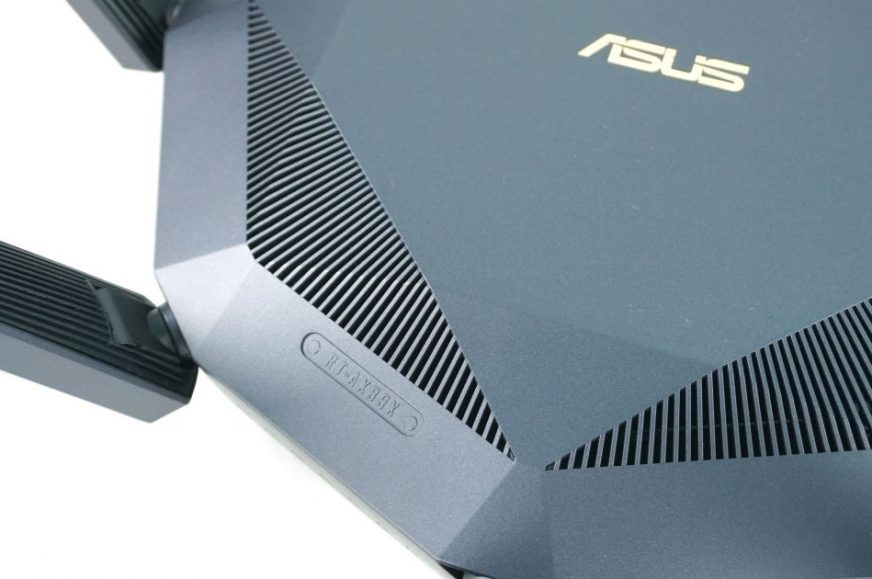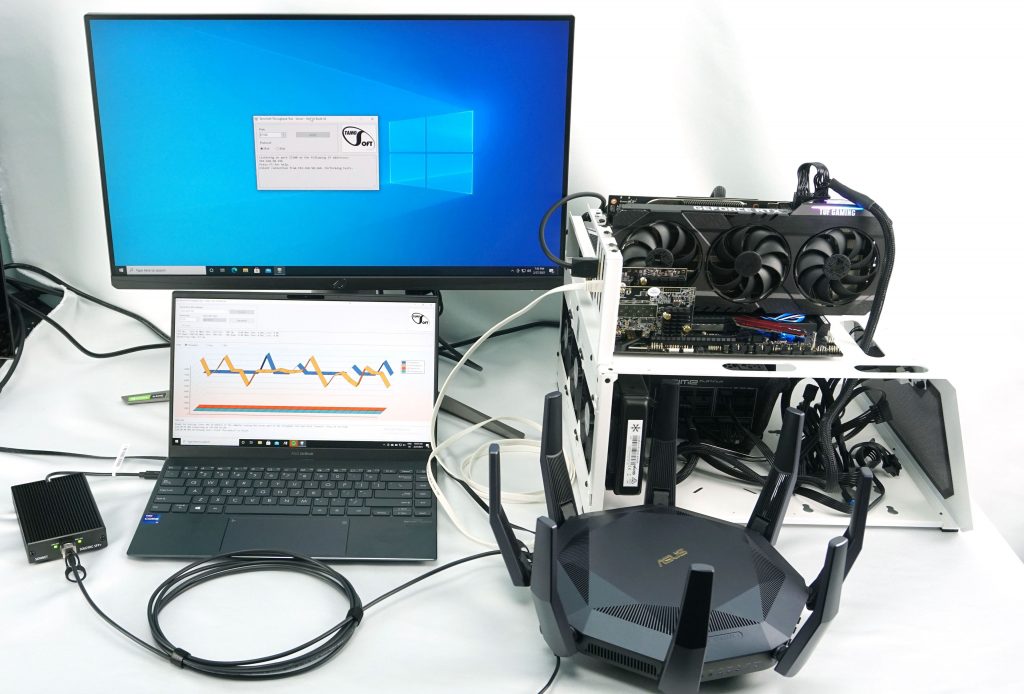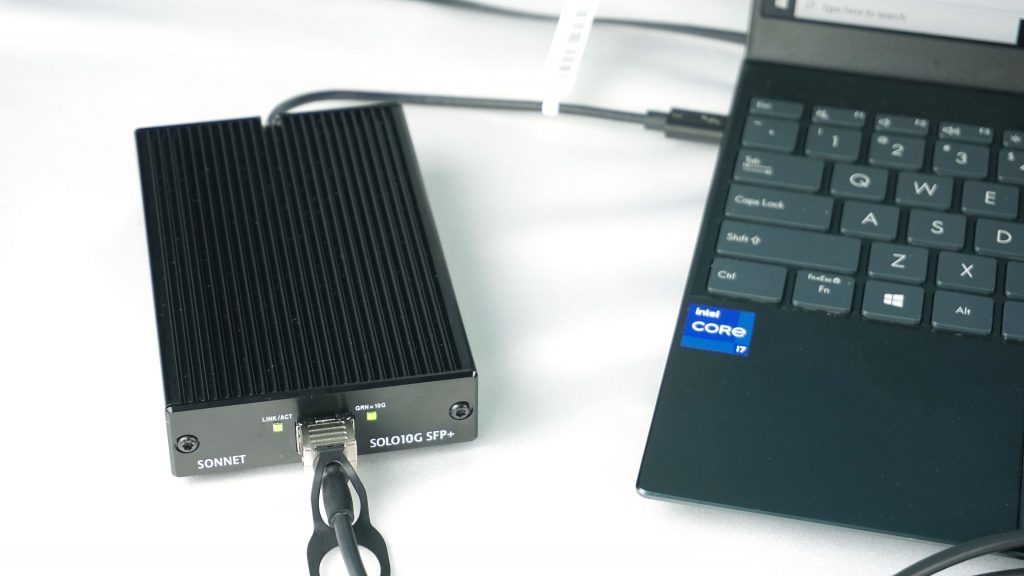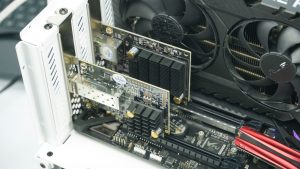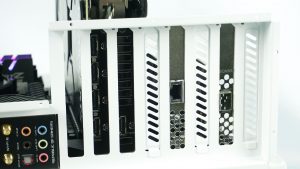Test results
We only test routers rarely, usually if they bring any significant news. The last time, for example, it was an Asus router with WiFi 6. The first home router with a 10-gigabit connection is now coming to the market from the same manufacturer, using RJ45 and SFP+. The slow 1 Gbps cable connection was the drawback of WiFi 6 routers, and this is what the new RT-AX89X eliminates. Thanks to 10 Gb connectors, the home network is thus entering a new era.
A few words for introduction
The test configuration tried to get the most out of each router, and the newer pair AX88U and AX89X therefore had the 160 MHz band activated in the settings, which is not available with the AC88U. Activation of the 160 MHz band is available in the settings, or right in the initial configuration of the router on the first start-up.
In addition to the router settings, let’s take a closer look at the test devices.
Let’s start with the easier one. It’s an Asus laptop, specifically the new ZenBook 14, which, in addition to its dimensions, is practically identical to the 13-inch version we’ve tested. We use the laptop for all WiFi tests and it was also used for cable connection tests using the Thunderbolt 3 dock from Sonnet. We primarily connected the SFP+ DAC cable to the dock, but we also tested the RJ45 transceiver.
But the main element of the test rig is the testbench with Intel Core i7-10700K, ROG Maximus XII Hero and the RTX 3080 TUF, which served as a server for WiFi and wired connection tests. Tests of cable transfers to a USB storage connected to the router were also performed here.
In order to test both 10 Gbps connectors of the router, we used the already mentioned PCIe cards from Sonnet. One adds 10 Gb RJ45 and the other SFP+ port. It is a simple and practical solution for everyone whose motherboard does not have a built-in 10 Gbps LAN port, which is the case with the used ROG Maximus XII Hero.
So much for the introduction, let’s go to the tests themselves.
In the immediate vicinity
The novelty brings significant progress in WiFi speed tests compared to previous models. With a 1 Gbps connection to a computer, it is around 800–900 Mb/s, and with a 10 Gbps link, we are already transferring more than 1000 Mb/s via WiFi. In this case, the bottleneck is likely the laptop, and WiFi transfers have even higher potential.
Zo vzdialenosti desať metrov
The advantage of eight antennas is shown in transfers over longer distances, where thanks to a stronger signal, the AX89X achieves many times better results than the other two routers.
Wired transfers
In tests of wired transfers between two devices, we see that the speeds with 1 Gbps server and client are more or less the same. You can only see the difference if we connect the client to the AX89X via a 10 Gbps connector, which jumps to 900 Mb/s. Once you use both 10 Gbps connectors – RJ45 and SFP+ to connect the client and server in any order, you get values somewhere between 4–5 Gbps in both directions, which is a really big jump compared to the other two routers.
Upload and download via USB port
We’ve also tested the speed of the USB connection. The SanDisk Extreme Portable SSD served as external storage, which we connected in all cases via the fastest available port, i.e. USB 3.0. You can see that when connected to WiFi, the AX89X and AX88U are fighting for the first place, while the AC88U is significantly behind. With a cable connection, the AX89X and AX88U are completely balanced in terms of 1 Gbps LAN connection. As soon as we switch to one of the 10 Gbps connectors, the upload speed increases by almost 30% and the download almost threefold. The only exception is the connection to the laptop via the Thunderbolt 3 port, where slightly lower numbers are achieved, which is again more related to the speed of the SSD in the laptop than the connection itself. Either way, cable connections offer significantly higher speeds than WiFi, as expected.
- Contents
- Package and specifications
- 10 Gbps network – pitfalls and solutions
- Software – General settings
- Software – Advanced settings
- Test methodology
- Test results
- Conclusion





